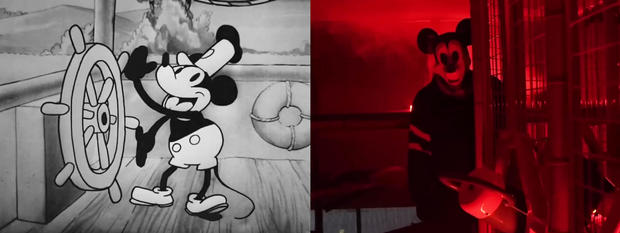
Public domain, where there is life after copyright
For nearly four decades, United Airlines licensed George Gershwin’s “Rhapsody in Blue” to be its musical identity. In 2020, however, Gershwin’s jazzy classical classic fell out of the friendly skies – and landed in the public domain.
Which means, when the copyright expires, anyone is free to use and build upon that work. “No fees, no licenses, no tracking down the person who owns it, no permission,” said Jennifer Jenkins, director of the Center for the Study of the Public Domain at Duke University Law School.
She said there are a lot of famous works that don’t belong to their creators anymore – films like Charlie Chaplin’s “The Circus,” and Fritz Lang’s “Metropolis,” books like Ernest Hemingway’s “The Sun Also Rises,” and characters like Peter Pan, Dracula and Frankenstein. They’re all now owned by us, the public, free for anyone to use to create something fresh.
For Her/My Green Light – The Great Gatsby on Broadway by
The Great Gatsby Musical on
YouTube
The truth is, most works aren’t lucky enough to be economically viable for as long as F. Scott Fitzgerald’s, or Ernest Hemingway’s, or even Walt Disney’s.
This year, “Steamboat Willie,” which unleashed two of the most lucrative rodents in history, entered the public domain. To be clear, though, don’t go using the modern Mickey or Minnie, because they’re still under copyright; it’s only the version as they first appeared that’s fair game.
Still, as soon as those first copyrights expired, we got this: a Mickey slasher film, “Mickey’s Mouse Trap.” The same thing happened when A.A Milne’s Winnie-the-Pooh entered the public domain: The very non-G-rated “Winnie-the-Pooh: Blood and Honey.”
Walt Disney Pictures; Into Frame Productions
It’s those kinds of re-imaginations that many estates fear.
Sherlock Holmes is one of the most recognized literary characters from the 19th century, but Sir Arthur Conan Doyle’s estate began to see its copyrights begin to expire in the 1980s. Nevertheless, the Conan Doyle estate kept seeking licensing fees, arguing that since some of the later Sherlock Holmes stories were still under copyright, they should own the rights to all the characters still.
Author Les Klinger, one of the leading scholars on Sherlock Holmes, said, “At some point, enough is enough.”
In 2013 Klinger was about to publish an adaptation of the supposedly copyright-free detective, titled “In the Company of Sherlock Holmes,” when this happened: “The estate contacted that publisher and said, ‘You need a license,'” said Klinger. “And we said to the publisher, ‘No, you don’t.’ We just thought it was wrong, absolutely wrong, and it made us very angry.”
So, Klinger filed a civil suit in Federal Court … and he won. “They didn’t give up easily,” he said. “They were trying to squeeze all the juice out of these lemons that they could right up until they’ve run out of copyright.”
Duke University’s Jennifer Jenkins said, “Copyright gives rights to creators and their descendants that provide incentives to create. But the public domain really is the soil for future creativity.”
There are surely more copyright clashes ahead. Characters like Bugs Bunny, Superman and Batman will all find themselves out of copyright protection soon enough.
Even Luke Skywalker will eventually find himself in the public domain, too, sometime around 2073. That sure seems like a galaxy far, far way.
For more info:
Story produced by Mark Hudspeth. Editor: Ed Givnish.
Lee Cowan
Source: cbsnews.com
